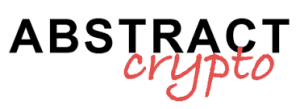Ray Dalio has revised his strategy, suggesting that up to 15% of a portfolio should be allocated to value preservation assets like Bitcoin and gold, in light of a US debt crisis that sees the public debt rising to 36.7 trillion dollars.
Why does Dalio now suggest 15% of Bitcoin and gold in the portfolio?
The new recommendation from Ray Dalio represents a significant shift. If in January 2022 the hedge fund icon suggested an exposure between 1% and 2% on Bitcoin, today he throws down the gauntlet and talks about a 15% on the combination of Bitcoin and gold. The goal? To protect the value of investments against the devaluation of the US currency and the systemic risk related to excessive debt.
Dalio, founder of Bridgewater Associates, stated that he personally owns “a bit of Bitcoin, but not much,” admitting that he still prefers gold. At the same time, he leaves investors the freedom to choose how to divide the share between the two asset classes.
The man has a point. https://t.co/zaUGGjx6im pic.twitter.com/tIF8XX7KRu
— Bitwise (@BitwiseInvest) July 28, 2025
What triggers the “jump” from 1-2% to 15%?
The global context has changed rapidly, according to Dalio. The United States must plan the issuance of another 12 trillion dollars in Treasury to support the state machinery: a figure that risks derailing financial stability and triggering new dollar devaluation. The manager emphasizes that the problem does not concern only Washington, but also other Western countries like the United Kingdom, grappling with a “debt doom loop,” or a continuous cycle of indebtedness and devaluation.
In this scenario, Dalio states, the key lies in optimizing the risk/return ratio by diversifying into assets that preserve value: Bitcoin, therefore, along with gold, becomes central in his wealth defense strategies.
Bitcoin: effective diversifier or hidden risk?
According to Dalio, the primary function of Bitcoin today is not to replace the dollar, but to act as a defensive bulwark against the loss of purchasing power of fiat currencies. However, he maintains a cautious stance on its future role: while considering it an exceptional diversifier, he does not believe it can become the official reserve currency of central banks, due to limitations related to privacy and transparency of transactions.
The risk of “incomplete anonymity” and the public traceability of transactions work against the interest of global monetary authorities, and therefore limit — according to Dalio — the institutional expansion of Bitcoin, while acknowledging a growing adoption among private and institutional investors.
What is the current situation of Bitcoin and gold?
Dalio proposes this revision just as Bitcoin hovers around 118,100 dollars, close to the all-time high reached last July. A rally that also involves the gold reserve: gold continues to record record prices, taking refuge in macroeconomic turbulence.
While the performance of assets linked to currencies like the dollar and the pound wavers, Bitcoin and gold are increasingly seen as “hard currencies,” competitive compared to traditional options. This trend is reinforced by the increase in demand for decentralized instruments that are less susceptible to state inflation.
How is the suggested 15% divided between Bitcoin and gold?
Dalio does not impose a fixed recipe, allowing each investor to define their own allocation between gold and Bitcoin based on risk profile and preferences. While he personally prefers gold, he does not rule out that a modern portfolio could significantly shift assets towards Bitcoin, albeit with caution during the “rebalancing” phase.
The flexibility suggested by Dalio goes against the trend compared to traditional approaches where the exposure in Bitcoin remains residual. Now, the consideration of criptovalute officially rises from the rank of a bet to that of structural hedging, even for those who manage enormous wealth.
What changes for global investors?
The new position of the founder of Bridgewater Associates will most likely have a significant impact on the strategies of large funds and retail, placing Bitcoin at the center of the macro debate. The exponential growth of Western debt and the “debt doom loop” described by Dalio push towards a paradigm shift: not just gold against instability, but synergy between digital and material assets.
The main warnings issued by Dalio, however, concern the responsibility of each investor in managing risks and balances, avoiding overexposures or “all or nothing” solutions. Bitcoin, although close to its highs and more mature than ever, remains a volatile asset, never devoid of systemic risks.
What happens now: prospects and open issues
The position of Dalio confirms the historical shift in the markets: Bitcoin is increasingly less of an outsider and more a part of wealth protection strategies, along with gold.
The future depends on regulatory evolution, technological developments, and the next moves of central banks. With the debt crisis in the United States and the need for record Treasury issuances, the pressure on the devaluation of traditional currencies is set to increase. Follow the evolution of the strategy of value preservation assets: the configuration of portfolios could change radically in the coming weeks.


